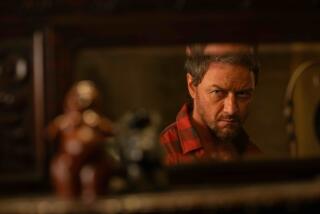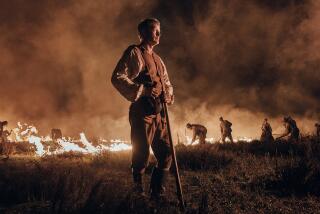Danish Town Hopes to Be a Swan
ODENSE, Denmark — One statue, a stuffy museum and a one-room cottage now dwarfed by a parking garage are the sum total of tributes to Denmark’s greatest literary light in this city that was Hans Christian Andersen’s birthplace and inspiration.
Stratford-upon-Avon this is not. There are no annual festivals staging his plays, nor readings of his enchanting stories about the ugly duckling, the little mermaid or the boy who blew the whistle on the emperor’s new clothes.
Even here, in his homeland, readers are more likely to have formed their impression of Andersen from the eponymous 1952 Hollywood film starring Danny Kaye than from historical preservation.
But Danes are hoping to do right by their under-celebrated native son with the approaching 200th anniversary of his birth in 1805.
Breaking with national tradition that resists recognizing heroes, a team has come together to transform Odense into a fitting monument to his achievements.
“He was never really recognized in Denmark when he lived,” says Lars Seeberg, a festival director hired by the city to spruce up the memorials and organize events for the bicentennial. “Maybe we have trouble recognizing the very real geniuses. The philosopher Soren Kierkegaard lived in Copenhagen about the same time, and he never really got the recognition he deserved, either.”
In fact, the main curator of Andersen’s works appears to have been the storyteller himself. The small Hans Christian Andersen museum contains mostly displays of the writer’s personal correspondence, sketches, diaries, travel notes and paper cutouts that he collected during his 70 years. The author also saved his original manuscripts, but nine years ago thieves broke into the poorly secured site--an 18th century row house where historians speculate he was born--and stole them.
“They’ve never shown up at any art auctions, so we’re hoping this was the work of some mad collector and that we might get them back some day,” says historian Karsten Eskildsen.
What remains of the memorabilia will be presented in a more engaging fashion after the museum is refurbished as part of the $28-million bicentennial project. Organizers aim to co-produce theater presentations in 30 major cities around the world between the writer’s April 2 birthday and Christmas.
Their hope is that the birthday events and improvements will provide an enduring lure for tourists.
Just a few blocks from the museum stands the half-timbered cottage where Andersen spent 12 years of his boyhood in a single room shared with his parents, Hans and Anne Marie, and an illegitimate half sister. Despite poverty, the writer nurtured fond memories of the home, where his shoemaker father made up many of the characters and messages that later found their way into the son’s stories.
The cottage draws only about 20,000 visitors a year, compared with 125,000 for the museum, and there is, indeed, little to see but the family’s spartan confines. Devoid of furnishings or historical context, the tiny home is surrounded by office buildings and a parking lot entrance that opens like a giant maw about to swallow the cottage whole.
“I don’t know what they were thinking! Odense is only famous because of Andersen!” laments Eskildsen, blaming the city for the halfhearted presentation of the writer. A major traffic corridor bisects what little is left of the old quarter where the museum stands, and the only other monument is the author’s statue in Fairy Tale Park.
Andersen, who published his first book at 17, is one of the most widely read authors in the world. His fables have endured as classics through generations and have been translated into 135 languages.
Despite the reams of paper left behind by the author, there are some holes in his biography. For instance, his exact birthplace is unknown, because his parents had no place of their own at the time he was born. Scholars have only guessed that they stayed with a relative who lived in the corner house now hosting the museum, Eskildsen says.
Andersen never married, and no one knows how ardently he pursued the two women he loved--the Swedish singer Jenny Lind and Riborg Voigt, a friend’s sister who was already betrothed when he met her.
Eskildsen says Andersen wrote passionately about Lind but never made clear whether he proposed to her. Voigt’s last letter to the storyteller was so meaningful that he carried it against his heart for half a century. Edvard Collin, his friend and patron, discovered it on Andersen’s deathbed and burned it without reading it, the historian says.
Putting more depth, detail and emotion into Andersen’s image is a key objective of the bicentennial project, festival director Seeberg says.
“Andersen is mainly appreciated here as a children’s storyteller, but now we are aiming to present him as a full figure in the cultural world,” he says. “He wrote 156 stories, and many of them are definitely not for children.”
He blames the Danny Kaye musical made nearly half a century ago by director Charles Vidor as “the main antagonist” in the drive for historical correction.
“It’s an awful film--naive, sentimental, stupid and simply not true,” says the event planner.
*
Williams was recently on assignment in Denmark.
More to Read
The biggest entertainment stories
Get our big stories about Hollywood, film, television, music, arts, culture and more right in your inbox as soon as they publish.
You may occasionally receive promotional content from the Los Angeles Times.











